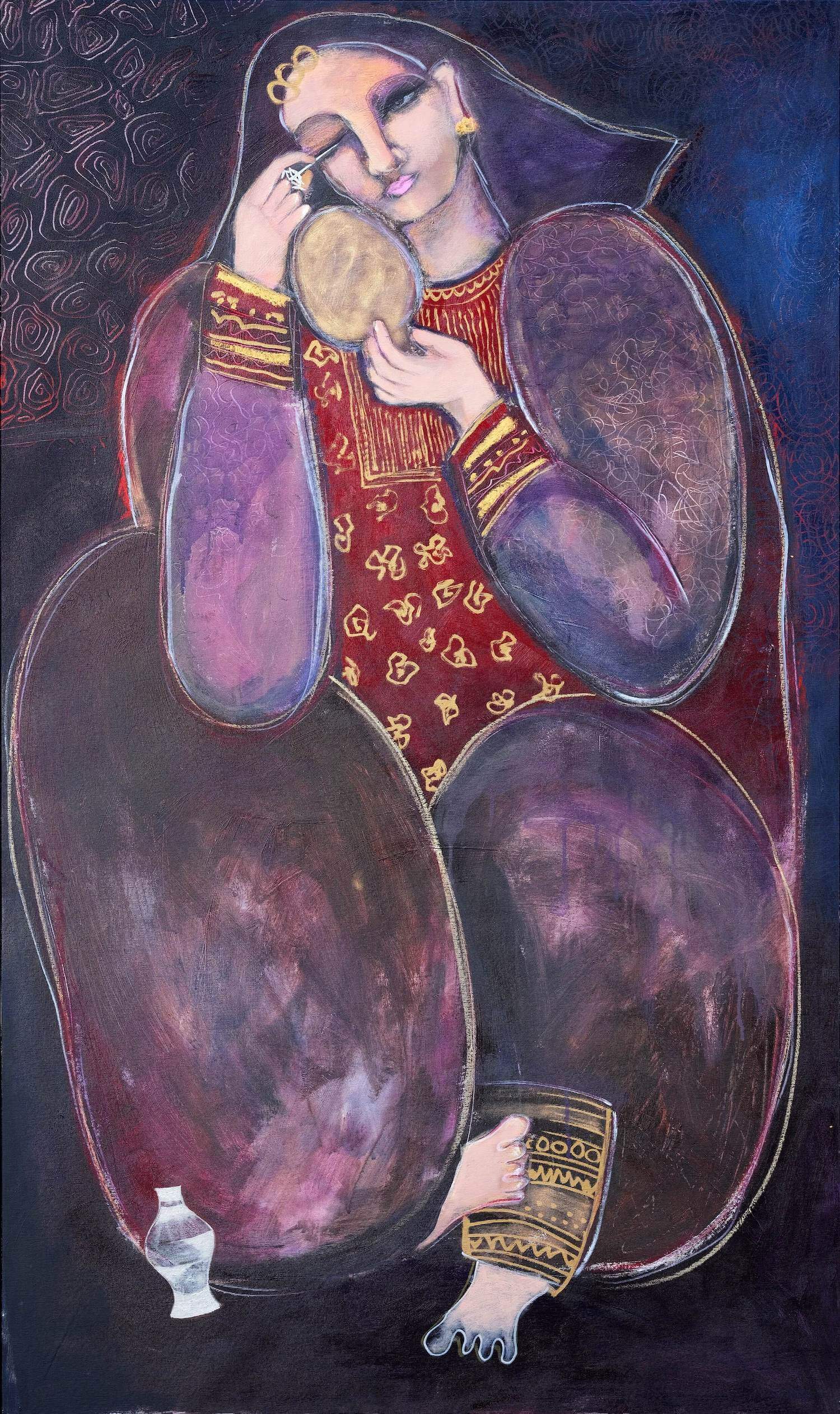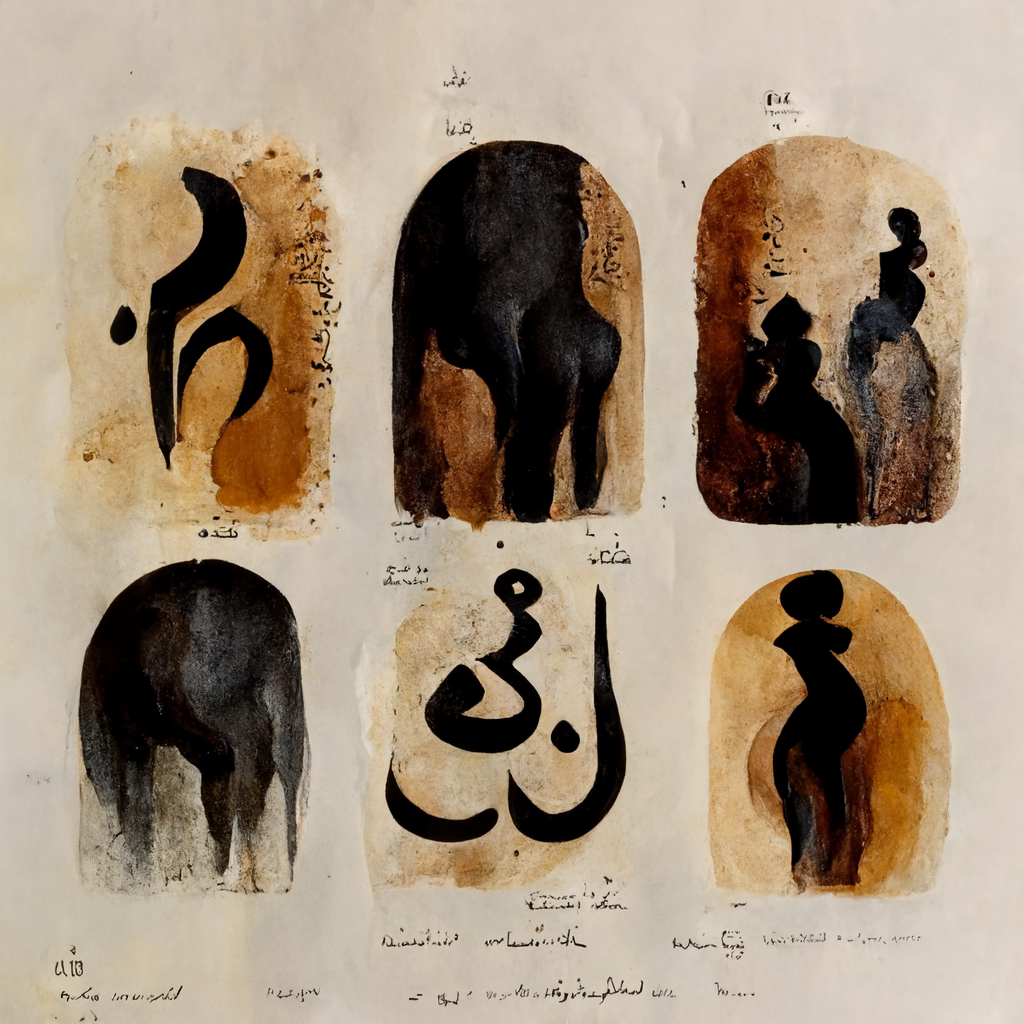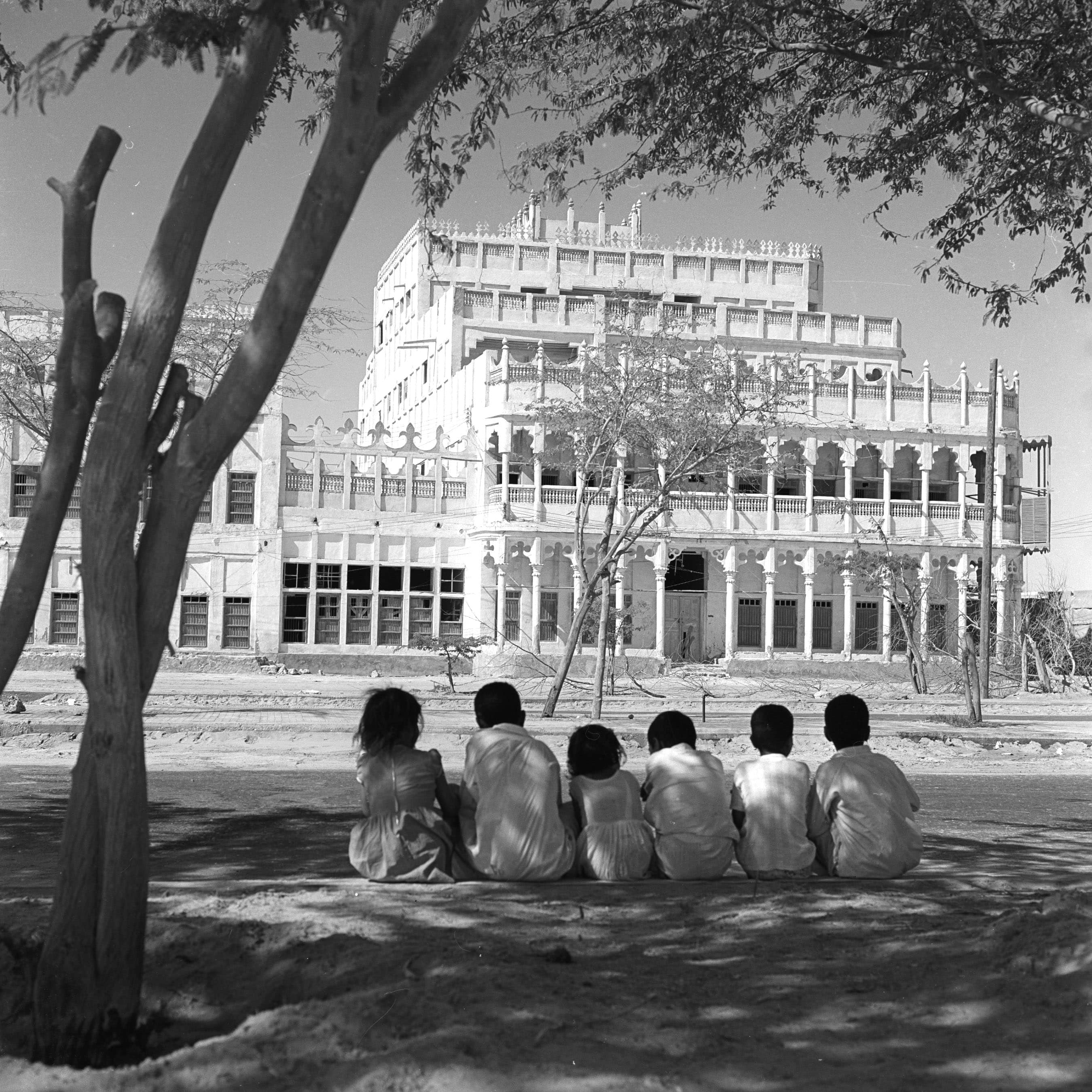The Red Dress
Red Dress and the artist Kirstie Macleod, 2021, Photo by Sophia Scorr-Kon.
British artist Kirstie Macleod, creator of the ‘Red Dress’ project.
For more than 13 years, a beautifully intricate multi-cultural project titled ‘The Red Dress’ captured the skills, the stories and the imagination of artisans from across the world through the art of embroidery.
This award-winning, global, collaborative embroidery project was conceived by British artist Kirstie Macleod. It provided an artistic platform for women around the world, many of whom are marginalized and live in poverty. Constructed out of 84 pieces of burgundy silk dupion, the garment has been worked on by 346 women and seven men, from 47 countries, with all 136 commissioned artisans paid for their work (as well as receiving a portion of all ongoing exhibition fees). The rest of the embroidery was added by audience members at various exhibitions and events.
Embroiderers include female refugees from Palestine, Syria and Ukraine; women seeking asylum in the UK from Iraq, China, Nigeria and Namibia; victims of war in Kosovo, Rwanda, and DR Congo; impoverished women in South Africa, Mexico, and Egypt; individuals in Kenya, Japan, Turkey, Sweden, Peru, Czech Republic, Dubai, Afghanistan, Australia, Argentina, Switzerland, Canada, Tobago, Vietnam, Estonia, USA, Russia, Pakistan, Wales, Colombia and England; students from Montenegro, Brazil, Malta, Singapore, Eritrea, Norway, Poland, Finland, Ireland, Romania and Hong Kong; as well as upmarket embroidery studios in India and Saudi Arabia.
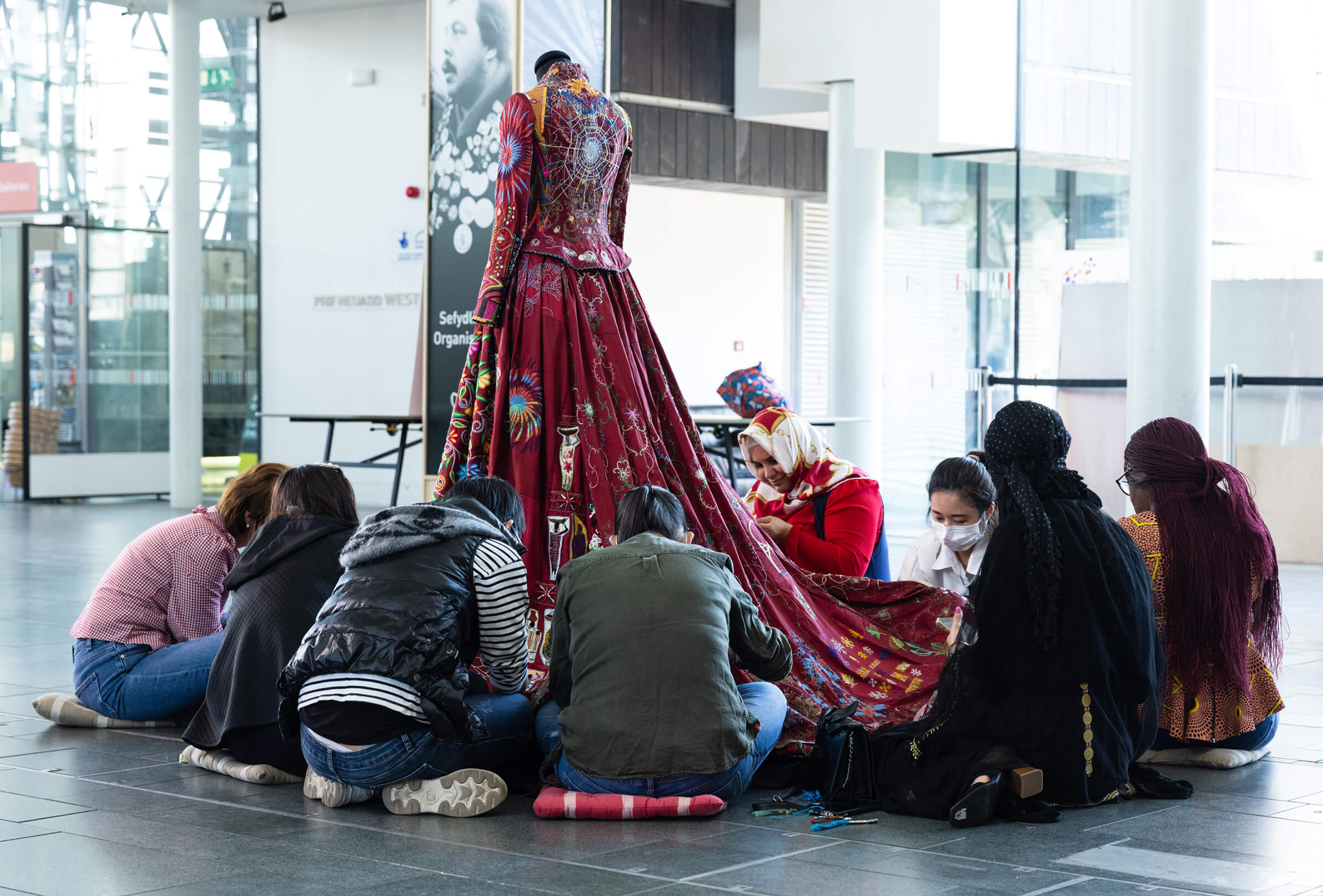
Embroidery Circle, Swansea, womens’ asylum and refugee support group, National Waterfront Museum ,Swansea, 2022, Photo Mark Pickthall.
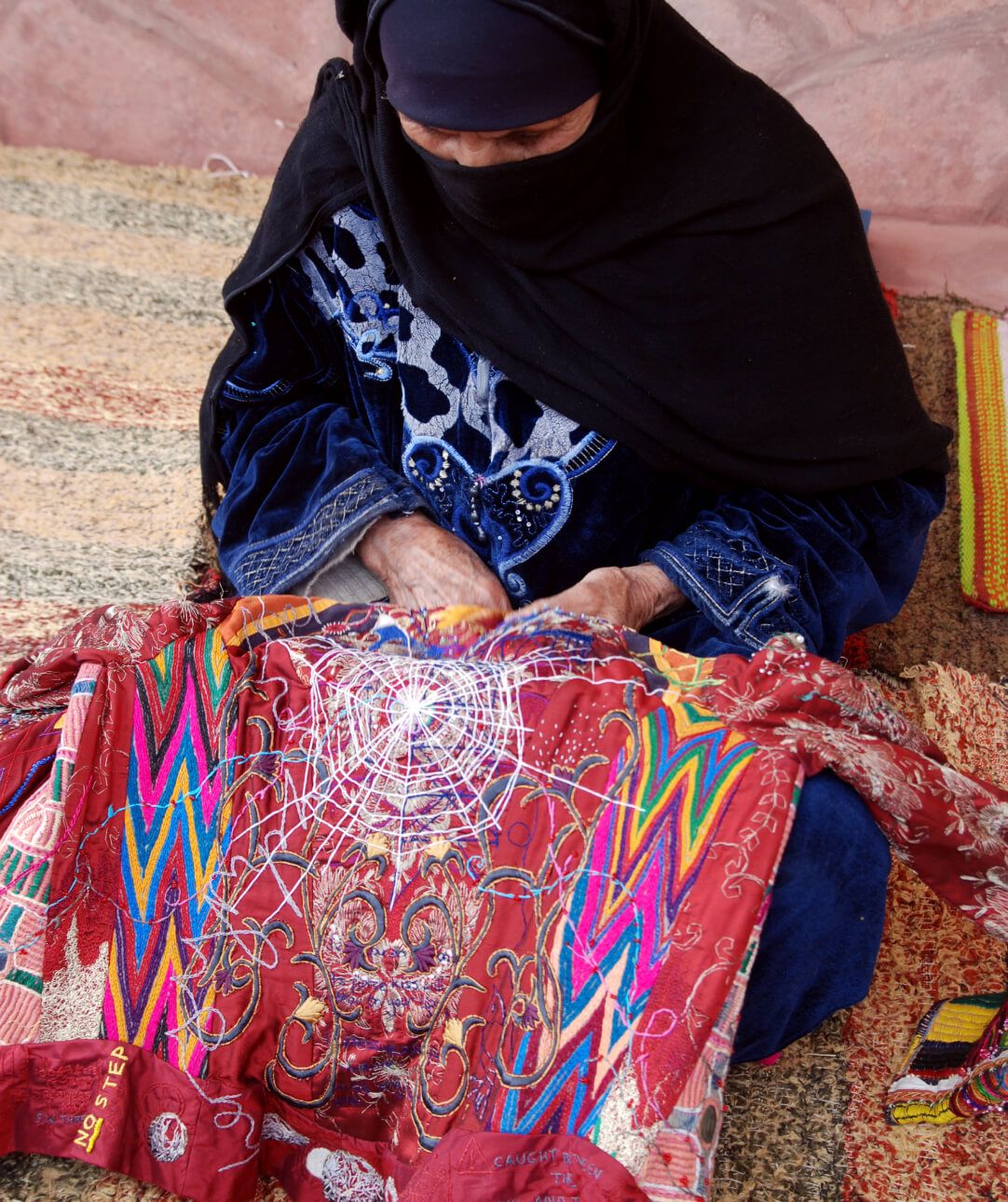
Farhana Gabaly, Egypt, 2015, Photo by Kirstie Macleod.

The Red Dress’, embroidery detail, Egypt, Mexico, Russia and South Africa, 2019, Photo by Dave Watts.
Q1. Why do this project? And did it accomplish its goal?
Because I had a desire to connect individuals and women from across the world, to allow them a space to share and to connect without any prejudice, without any borders, without any boundaries. It did accomplish its goal and a lot more. I had no idea that it would reach as far as it has and be able to continue for so long. I didn’t know whether it would work for six months or a year, and it has been 13 and a half years. I’m overwhelmed and blown away by the momentum of the dress and how many people it has had an impact on.
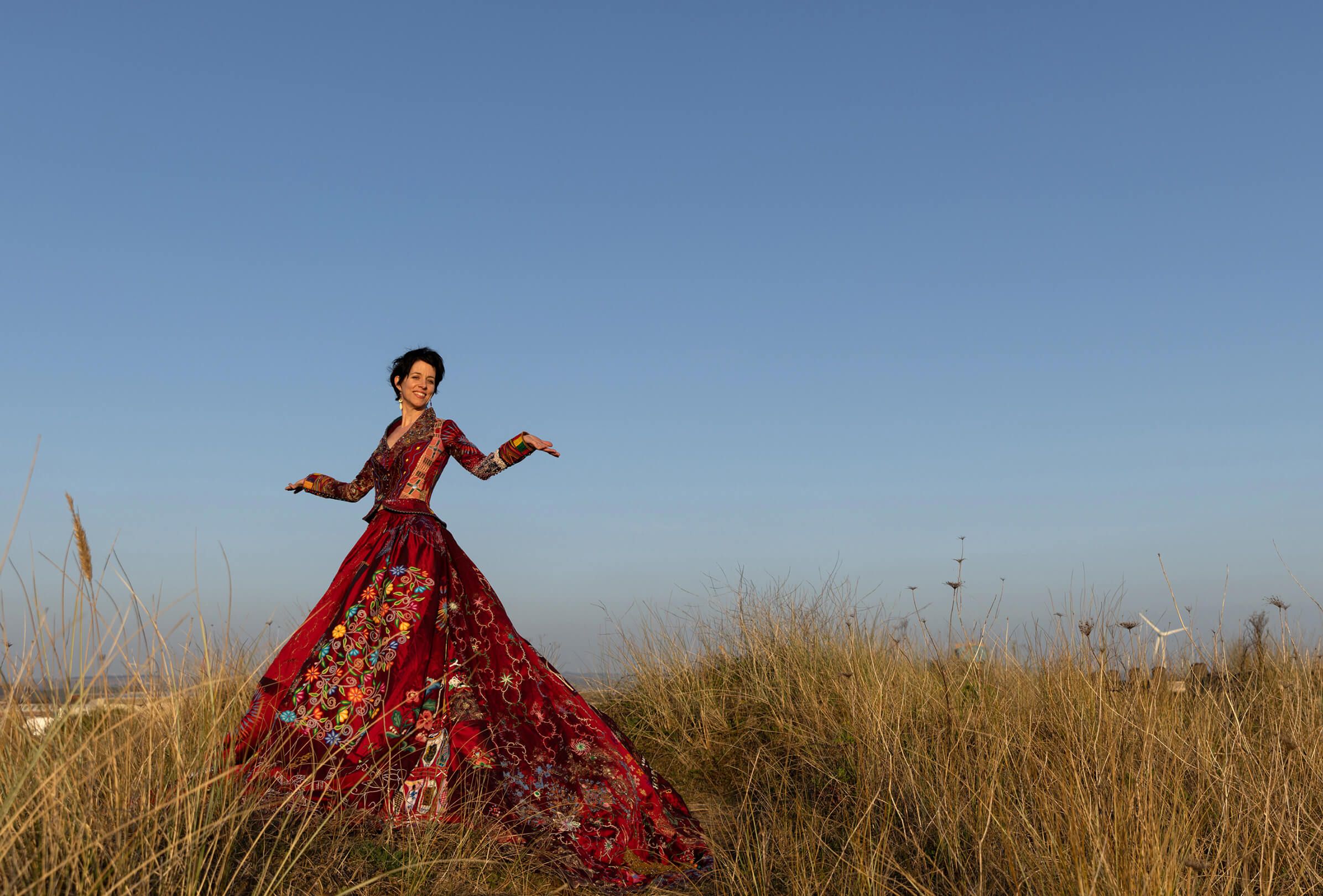
Kirstie Macleod wearing the JUST completed Red Dress in Swansea, 2022, Photo by Mark Pickthall.
Q2. Why is the dress red?
Because you can’t ignore the colour red. It is a very powerful colour full of emotion, love, passion, anger, and rage. It is tied with women’s cycles, and also is the colour that you can’t ignore. If you see red, you’ll look at it. And I wanted the voice of the women and the artists to be noticed.
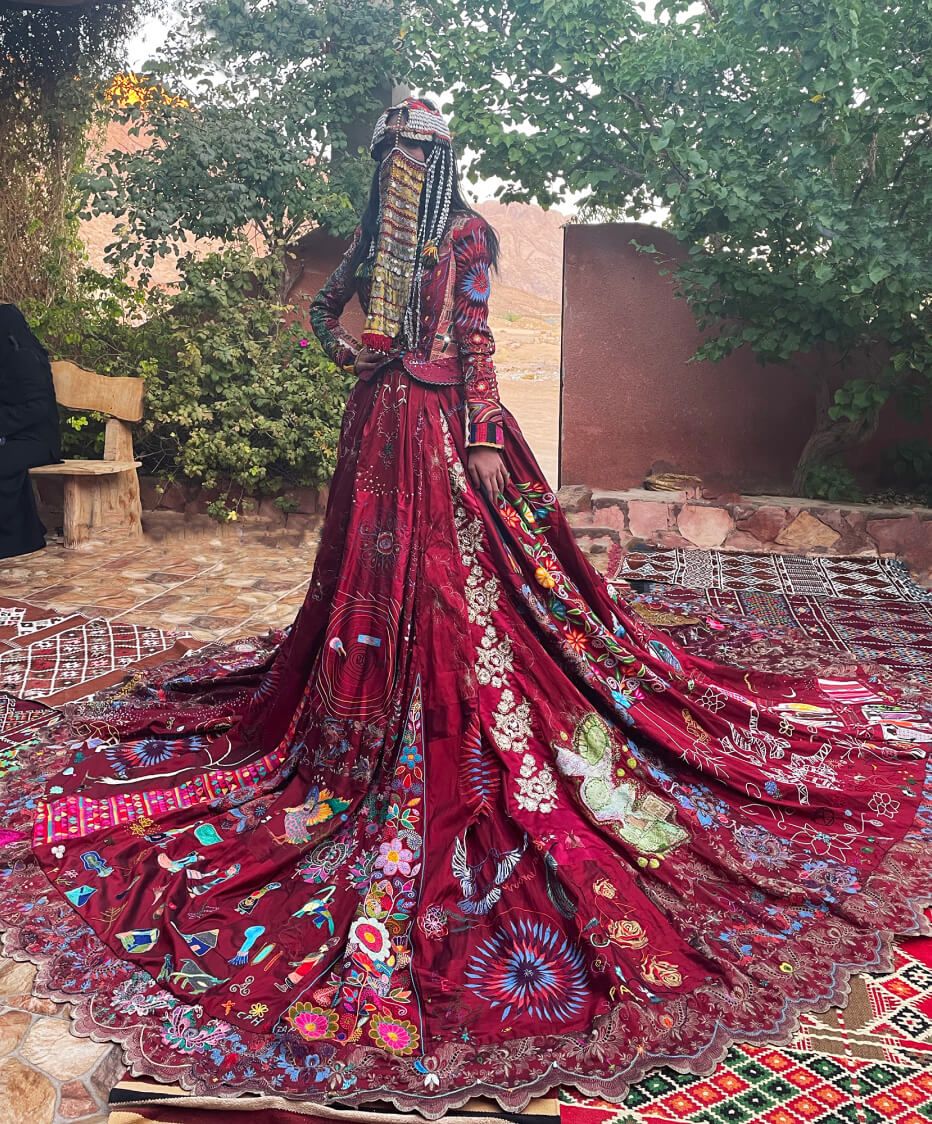
Rahma Ahmed wearing the Red Dress in St Catherines, 2022, photo by Kirstie Macleod
Q3. Any recurring patterns or themes?
A lot of the artisans have used traditional motifs handed down to them through generations, through villages and towns. There are lots of flowers and birds on the dress, I guess it is something from all around the world that we all love and can relate to. Some of the artisans have chosen to use much more simple stitches but have conveyed very powerful stories from their lives like war and wishes for a more peaceful future.
Q4. Anything special about the Middle Eastern design?
I really love the Middle Eastern designs; there is definitely a feeling of geometric patterns in them, stars, grids, diamonds and very beautiful intricate stitches, and bold colours. The artisans here in Sinai, inspired by the flowers on the mountainside, have created these very beautiful geometric kind of spheres mandala type designs but they have a freedom and a looseness to them so they do also look quite organic.
Q5. Did you find anything special about the Saudi designs?
Yes, the embroidery from Saudi is incredibly intricate, and I understand that it encompasses motifs used in traditional Bedouin wedding dresses. It is definitely some of the most intricate and detailed work on the dress, and it's actually gorgeous.
saudi designs on the dress, courtesy of the artist.

Saudi designs on the dress, courtesy of the artist.
These kinds of projects, like the Red Dress, are important to capture and inspire cross-cultural stories and memories. We hope it inspires similar projects, ones that end up being important, almost historic artifacts of heritage and creativity.
To read more about The Red Dress, please check out their official website.
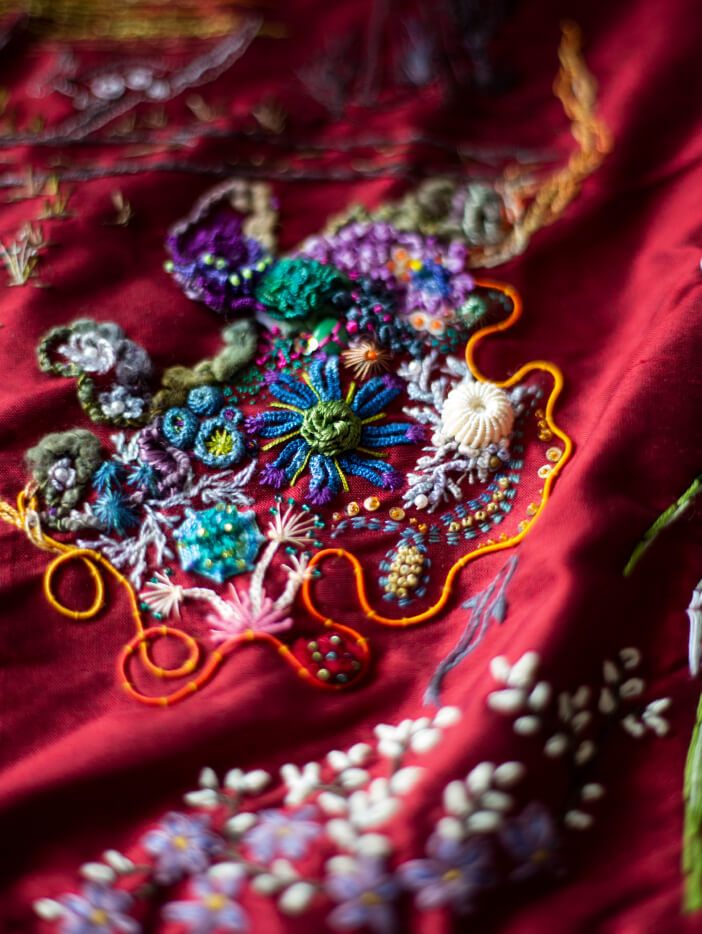
Red dress details, embroidery by Allthreads, Collective Australia, 2018, Photo by Sophia Schorr-Kon.
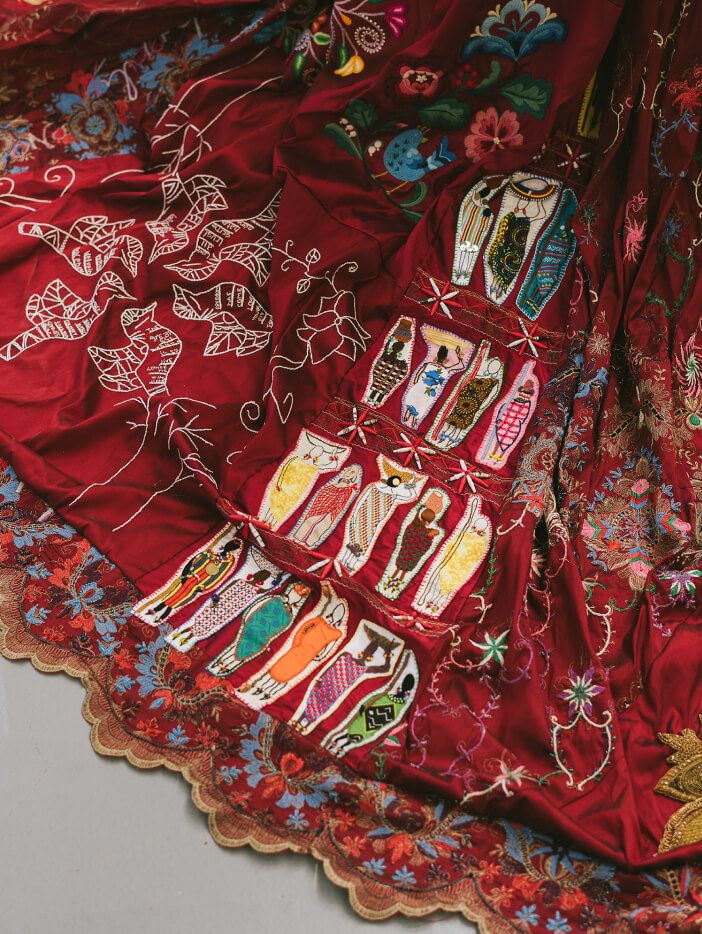
Red dress details, Kosovo and Kenya, Photo by Dave Watts, 2019.

Sunflower 2022, Ukraine.
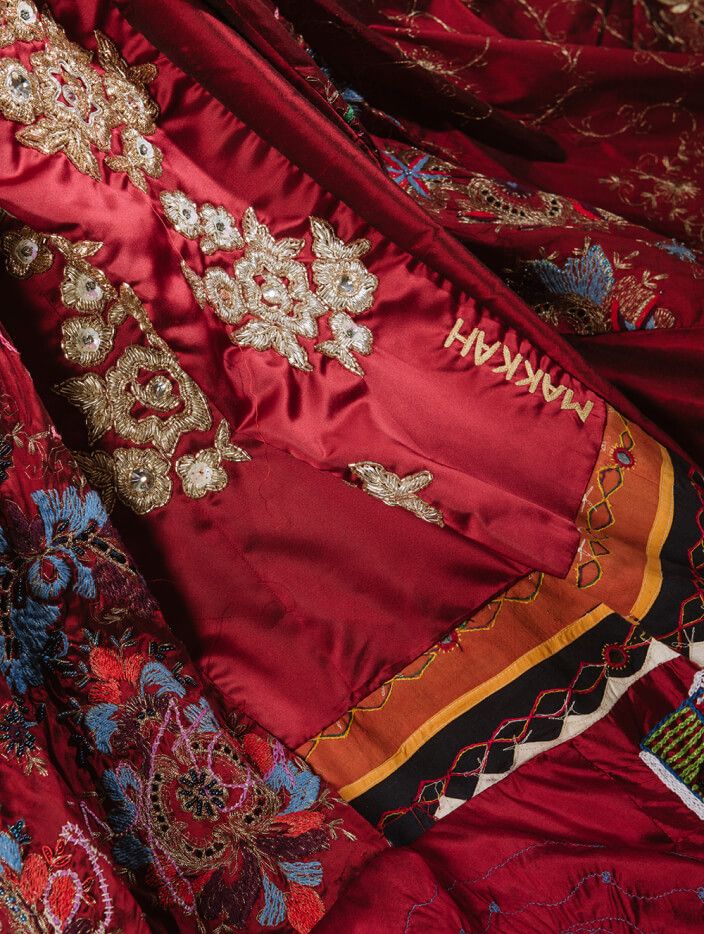
Saudi designs on the dress, courtesy of the artist.
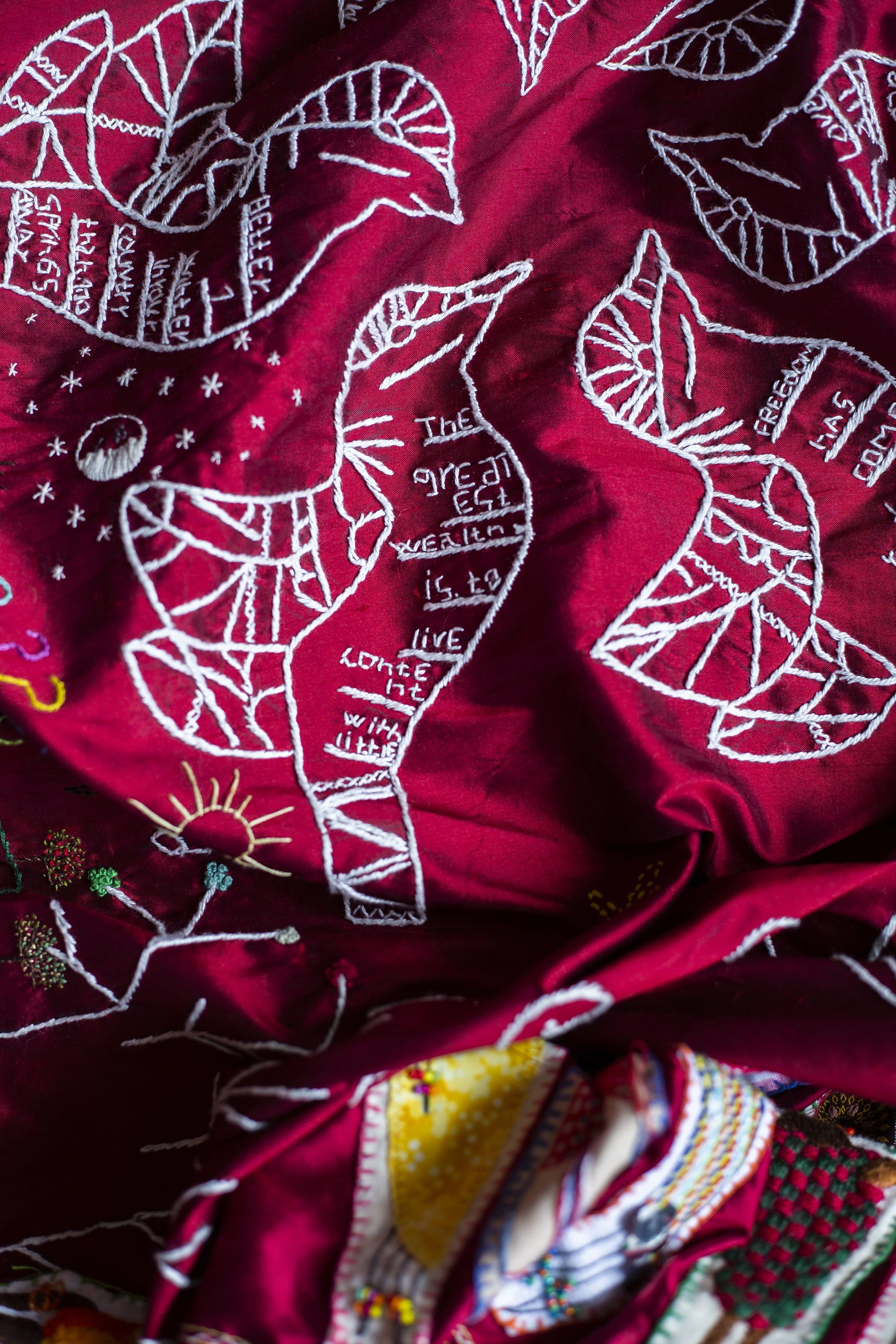
Red Dress Detail of Kosovan embroidery, 2021. Photo by Sophia Schorr-Kon.
